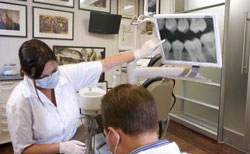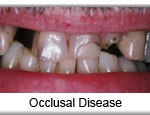
Looking good with smile makeovers
A smile makeover includes several dental technologies, from least invasive and least expensive to more expensive as required to accomplish a beautiful, natural-looking smile. Gone are stained, chipped, misaligned, and missing teeth. People have many misconceptions, and I often ask questions about smile makeovers. A patient says, “I saw a friend who had their teeth capped, and they looked awful like they were all teeth, and it was dark near the gum line of the capped teeth.” This is why a qualified cosmetic dentist must avoid this being said and felt about you. Some years ago, an attractive young woman came for a consultation: She said, “What can you improve the appearance of my smile.” I examine her teeth, color and contour, arrangement in the jaw, and the opposing teeth. I examine the relationship of the jaws to one another. I examine the jaws, teeth, and lips for correct balance in all facial features.
Upon completing my examination, I say: “You know everything about your teeth looks very good. Is there a problem you have with your teeth or smile?” The young woman responds: No, there isn’t any problem. I just wanted to see if you thought anything could be better.” There are misconceptions about what constitutes a smile makeover. However, one important ingredient is that potential patients view something about their smile as wrong. They may not know why something appears incorrect, that’s the trained cosmetic dentist’s job, but this person does know what they don’t like when they look in the mirror. Without this important perception by the patient, an analysis of the smile is of no value. That does not mean that in the course of a routine examination, the dentist does not point out cosmetic and functional aspects of the teeth, gums, and bite that are not within the norm, especially those that, if uncorrected, could lead to more serious future problems. Often the Doc can correct a patient’s smile complaint with minimal effort and expense. But, if the patient does not see these issues, especially cosmetic issues, there is minimal impetus for them to change things as a problem. Occasionally when the cosmetic or general dentist points out dental findings that deviate from the norm, a patient might say, “I always wondered why my teeth or mouth appeared that way.” On such occasions, the dentist may have planted a seed for a change in the patient’s perception of their smile. For example, a patient asks the qualified cosmetic dentist, “I have never liked the color of my teeth,” or maybe they might say, pointing to a selected tooth or teeth, “I never liked the size of these teeth. They look too small to me.”
On the one hand, the smile makeover could be as simple as whitening the teeth. That is to say that all other measurable aspects of teeth, gums, and jaws appear normal in relation to one another, and the rest of the face and whitening of the teeth will satisfy the patient’s complaint. This is a minimal-effort, low-cost “smile makeover.” On the other hand, another patient could say, “I think my teeth are too dark, and I don’t like how this tooth overlaps the adjacent tooth, and I don’t like how the teeth tilt to one side.” Satisfying this patient’s complaints could potentially involve a variety of dental services. A sampling of these services includes composite bonding, porcelain veneer(s), full-coverage crowns, orthodontic treatment, dental implants, sometimes even gum or jaw surgery, or a possible combination of the above services. The cosmetic dentist’s job is to analyze the problem(s) as the patient sees their problem. At Smiles by Design, the answers to patients’ problems that are not straightforward come from examining clinical data gathered before presenting the solution to the patient.
This data could include Full mouth X-rays, Panoramic X-rays, computer tomography X-rays (Cat Scan), a plaster cast of the teeth possibly mounted on a jaw simulating device, wax-up of plaster cast to show corrective measures, intraoral mock-up with bonding to gauze appearance change within the frame of the lips, series of photos taken of the face head and teeth, complete intraoral examination and history of all teeth present in the mouth including possible teeth impacted under the gums in the jaws. Commonly, all the above procedures are not necessary to properly diagnose corrective measures for a patient. Before arriving at the solution or possibly optional solutions to the patient complaint(s), Doc lists the problems, prioritizing what brought the patient to seek help. Often, the dentist cannot properly correct the patient’s chief smile complaint without doing more than one service. That is why Doc’s analyses of the above information and weighing the patient’s desires are essential to providing the best possible or alternative treatments. Once the patient and doctor agree upon a corrective plan, the anticipated treatment time and the dentist can determine the treatment cost.


